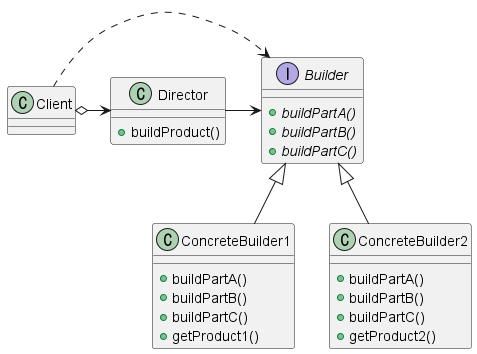[Design Pattern] Builder Pattern (빌더 패턴)
Builder Pattern
Builder Pattern 중 Director와 Builder의 관계는 전략 패턴은 생성에 적용한 패턴이라고도 할 수 있다. 즉, 다양한 생성 알고리즘을 구현하는 ConcreteBuilder는 그 구현체 수 만큼 다양한 Product을 반환한다. Client는 최종적으로 반환하는 Product을 조금 더 유연하게 생성하기 위해 Builder Pattern을 적용한다.
- Purpose
- Allows for the dynamic creation of objects based upon easily interchageable algorithms
- Use When
- Runtime control over the creation process is required
- Multiple representations of creation algorithms are required
- Object creation algorithms should be decoupled from the system
- The addition of new creation functionality without changing the core code is necessary
- Comparison with Abstract Factory
- Builder constructs the object step-by-step and the result is requested at a later stage
- Builder Pattern focuses only the result object
- Abstract factory returns the requetsted object immediately
- Abstract factory does not have an abstract builder; application calls the factory method directly
Builder Pattern Structure
- Director knows what parts are needed for the final product
- Concrete builder knows how to produce the part and add it to the final product

- Client
- selects director and concrete builder to build the product
- asks concrete builder to return final constructed product
- Director
- knows what steps it takes to build a product
- but it does not know how each step is to be carried out
- Builder
- specifies an abstract interface for creating parts of a Product object
- Concrete Builder
- constructs and assembles parts of the product by implementing the Builder interface
- defines and keeps track of the representation it creates
- provides an interface for retrieving the product
- Product
- represents the complex object under construction
When a Builder Shouldn’t be Used
- If the interface is not stable the Builder has few benefits
- Every interface change requires a change to the Controller and impacts the abstract base class or its objects
- A new method would require changing the base class and all concrete classes that will need to override the new method
- A specific method interface change would require all concrete classes supporting the old method to change

Leave a comment